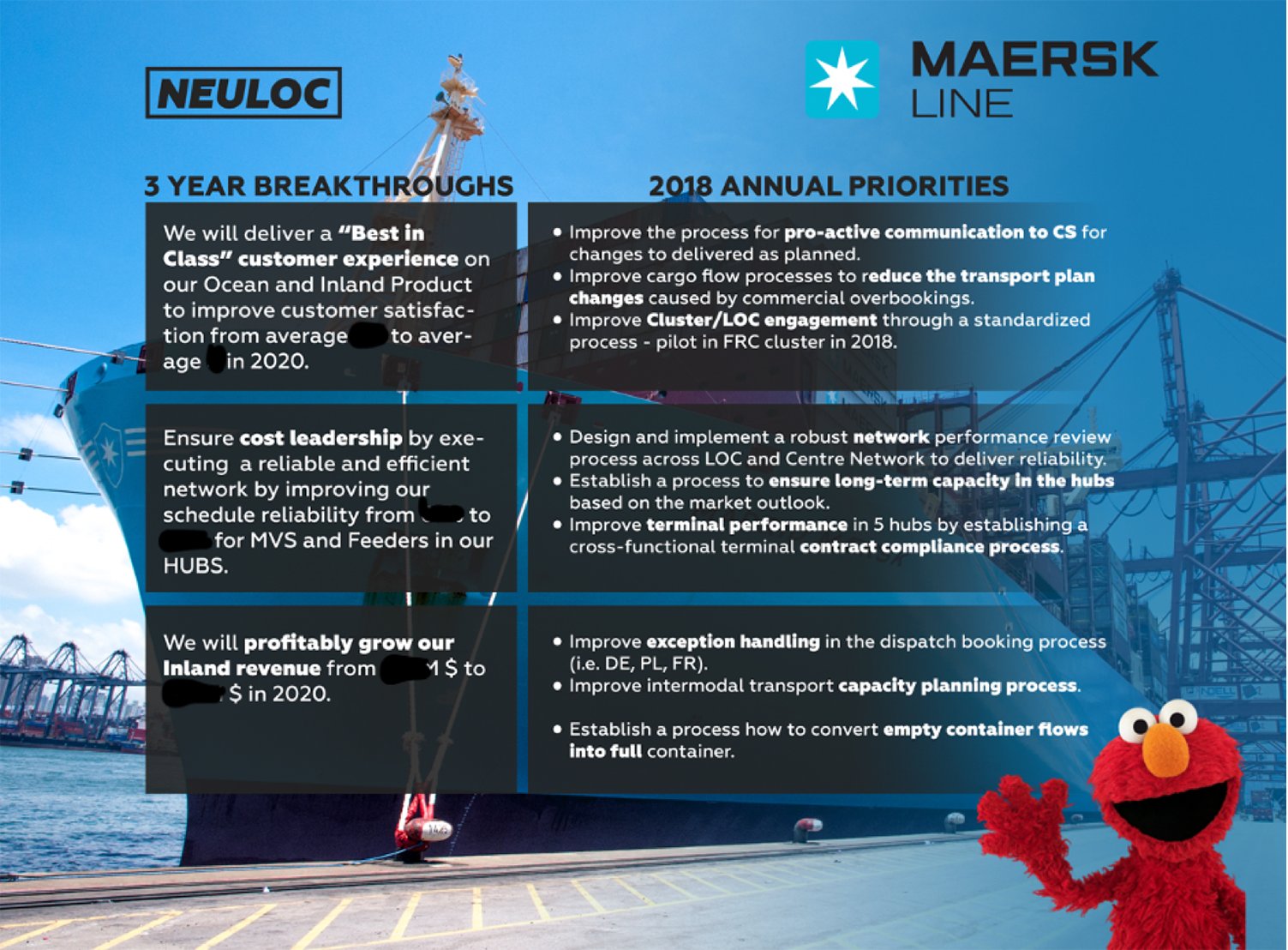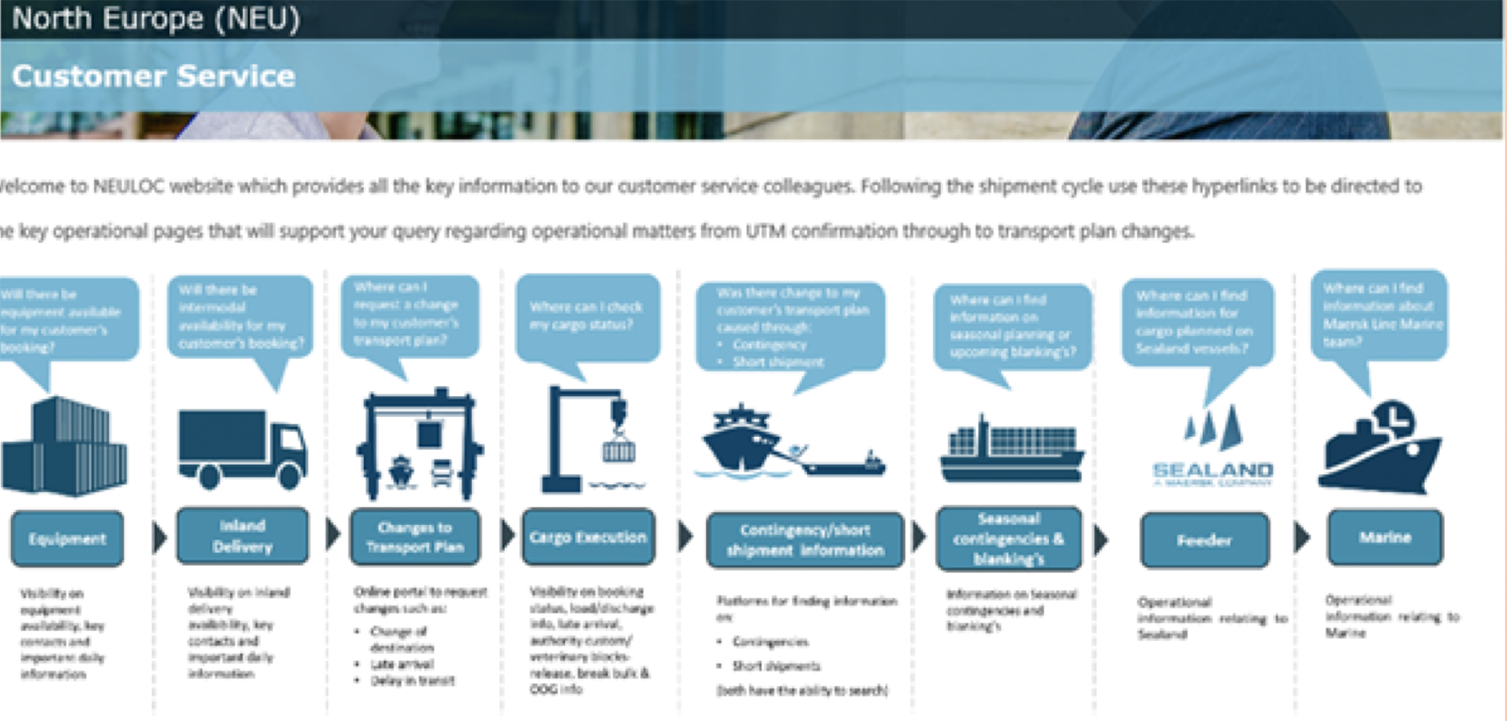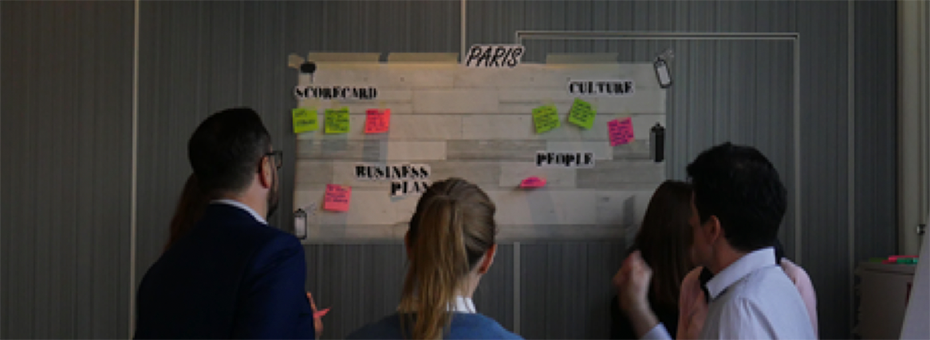The year 2017 was a windy one for Maersk Line North Europe Operations Center. The vessel network was operating at only 60-70% on-time reliability. Several of the biggest container terminals were congested and performing poorly, causing delays of the container vessels. Every day was a struggle, and everyone was working long hours to minimize the impact of these struggles on costs and customers.
Our operations leadership team gathered in October 2017 to reflect on the year’s performance and set the direction for the coming year. In our conversations, we came to believe that the organization was caught in a whirlwind, firefighting constantly to solve today’s problems instead of preventing fires in the first place.
That’s when we introduced hoshin kanri (HK) and devoted three months to create a three-year breakthrough plan.
Since that time, North Europe operations has improved its business results tremendously. We have run 18 annual priorities with more than 100 people directly involved. This work has increased customer satisfaction by 33%, improved schedule reliability for mainliner vessels by 9%, and boosted feeder metrics by 15%. All North Europe Operations leaders attribute these results primarily to the hoshin kanri work.

Every employee received a mouse pad in the first year of hoshin kanri deployment to create more awareness about the organization’s focus.
Although it is rewarding to look at the organization’s current achievements, we should not forget the challenges faced and lessons learned.
Lesson 1: Use A3 Problem-Solving As Your Power Tool
We had many discussions about whether the organization was ready for hoshin kanri (HK) in 2017. At that time, many people were concerned that we had not yet developed sufficient experience and maturity with the essential A3 problem–solving technique core to HK. We launched this work regardless and have learned since then that having one or two people with experience in A3 in a critical department/group will motivate the others to learn this technique in support of HK.
One of our annual objectives was to increase our customer satisfaction score. In 2017, our region scored the lowest globally. After doing a root-cause analysis of this problem, we identified one specific target that could boost performance: keeping customers informed in a timely manner. Although the operations organization is not directly involved in communicating to customers, we are responsible for providing accurate and timely information to our customer service.
After several gemba walks to customer service, we had an eye-opening experience. It was shocking how many different systems were involved in answering just one customer question. Additionally, our information was rarely clearly documented or promptly updated — all of which created extra difficulties for customer service.
These insights helped us create one source of truth: a website that could quickly provide the required information to the most frequently asked customer questions. This initiative contributed to a 15% improvement in customer satisfaction over the first year.

The front page of a website specially designed for customer service colleagues.
Lesson 2: Be Patient: Change Takes Time
HK was not positively received by Maersk North Europe Operations employees when it was launched in 2017. Many saw it as ‘just another management tool’ that would surely fail and be replaced by another tool the next year.
Knowing that it would not be easy to engage the staff, the leadership team put lots of effort into communication, especially in the first year. All 300 employees from different countries in Europe attended half–day cascade sessions hosted by at least one leadership team member. We made sure we listened to their concerns and improvement ideas.
Although the kick-off sessions created energy, we knew this would wane as the year went on. We responded by asking a communication team to make video updates of annual priorities showing quick wins and lessons learned. We found this video format engaged people effectively, especially the younger generation.
We hit a clear tipping point in the 2018 first quarter when people began to show initiative regarding their HK annual priorities. Employees started to believe in the power of HK after seeing tangible results such as improved feeder schedule reliability by 15% on three service lines.
Lesson 3: Focus Your Leaders on Preventing Problems Not Firefighting
Everyone working in the Maersk Operations leadership team is expected to understand their business deeply. Most of these leaders essentially “grew up” in Operations and were involved in daily operations decision-making.
We tapped HK to help shift from leaders doing daily firefighting to leaders working on preventing problems.Having leaders make all the decisions created problems. A marine operator who was fully capable of making a decision on whether to sail late by two hours from Rotterdam, which would have required loading all 40 planned containers, would typically have to wait for a final call from the head of operations.
Once we started to work with HK in 2017, the need to change this way of working became even more apparent. We needed to shift from leaders doing daily firefighting to leaders working on preventing problems.
To serve that goal, we purposefully created more strategic annual priorities, which were led by the operations leaders. They needed extra time to work on more strategic initiatives meaning letting go of daily operations.
One annual priority involved a new process for network development. The Copenhagen headquarters office typically created this type of work; operations struggled to implement it. We improved this by creating a new process. The Network Planning department would now take into account the data gathered by our operators on each “impossible” vessel trip schedule.
Deploying hoshin kanri was not easy, and we learned many things from our struggles. We learned how vital it is always to stay flexible — to constantly listen to our people and adjust where required, especially in response to gaps identified through the A3 problem–solving process. Our leaders were instrumental in supporting this change by transforming their leadership style and spending tremendously more time on strategic topics.
What to Do Next?
Join us for Hoshin Kanri Remotely–Aligning and Executing on Your Organizational Objectives. Through this 9-week learning experience, you will sharpen your leadership skills and develop a deeper understanding of hoshin planning (also referred to as strategy development and deployment). Learn more and register.
Managing on Purpose with Hoshin Kanri
Learn how to develop strategy and build alignment.



